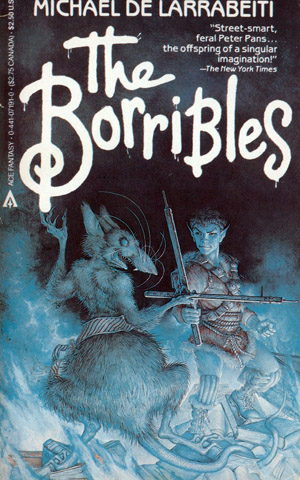 The Borribles
The Borribles
Michael de Larrabeiti
Tor (214 pp, $6.99, July 2005)
While on patrol one night in London’s Battersea Park, Knocker and his buddy Lightfinger discover a Rumble trespassing on their home turf. The two Borribles quickly capture the Rumble and then —
Wait. What’s a Borrible? What’s a Rumble?
Borribles, in Michael de Larrabeiti’s razor-sharp novel, are “feral Peter Pans,” to cadge a phrase from the New York Times, pointy-eared children who never grow up:
Normal kids are turned into Borribles very slowly, almost without being aware of it; but one day they wake up and there it is. It doesn’t matter where they come from as long as they’ve had what is called a bad start. A child disappears and the word goes round that he was ‘unmanageable’; the chances are he’s off managing by himself. Sometimes it’s given out that a kid down the street has been put into care: the truth is that he’s been Borribled and is caring for himself someplace.
They are urchins gone elf, living in loose neighborhood tribes, squatting in abandoned buildings and shoplifting their food; they have no leaders or laws beyond a collection of proverbs (“Don’t get caught”), which they frequently cite in their arguments. Borribles are anarchist lawyers, “outcasts, but unlike most outcasts they enjoy themselves and wouldn’t be anything else.”
Their sworn enemies are the Rumbles, intelligent rodents resembling “a giant rat, a huge mole or a deformed rabbit” that walk on hind legs and even drive cars. The Rumbles dwell in a massive (and very posh) underground bunker in Rumbledom; a native Londoner might better recognize the area as Wimbledon Common. They’re also parodies of The Wombles, a series of children’s books, TV shows, and films which I’ve never read or seen.
The discovery of a Rumble rooting around in their territory incites suspicion of a Rumble invasion of Battersea and beyond. A Borrible council is quickly called, whereupon it’s decided each of the Borrible tribes of London will furnish a warrior to participate in the Great Rumble Hunt. The goal of this expedition: to infiltrate Rumbledom and assassinate the eight members of the Rumble High Command, thereby decapitating Rumble society. And, so that the Rumbles may have a sporting chance, the Borribles release the Rumble prisoner with a message for the High Command, explaining the entire plan.
Thus ends Chapter One.
…
Read More Read More
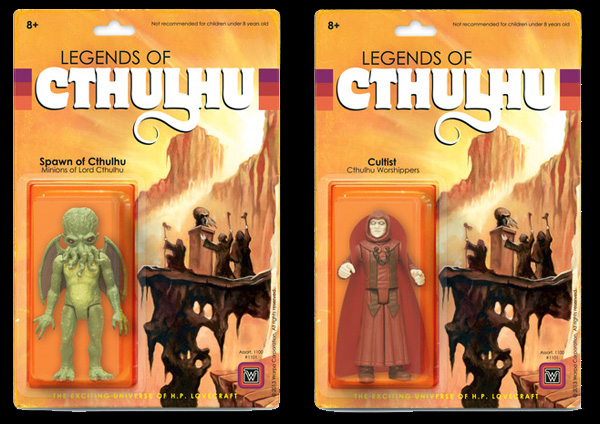
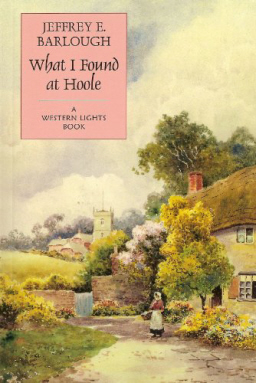
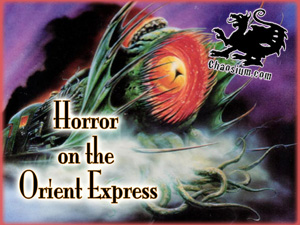 Chaosium
Chaosium 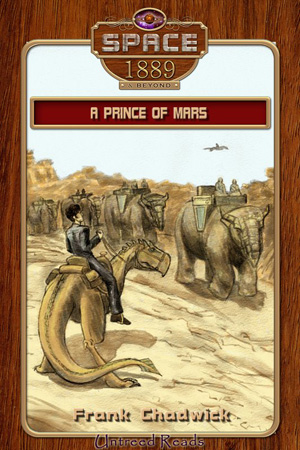 A Prince of Mars
A Prince of Mars 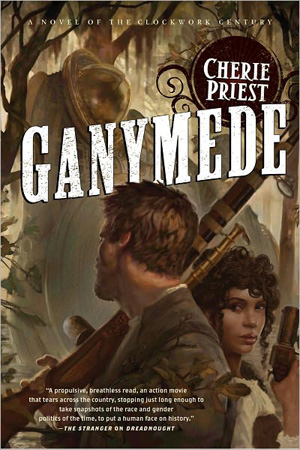 Ganymede
Ganymede 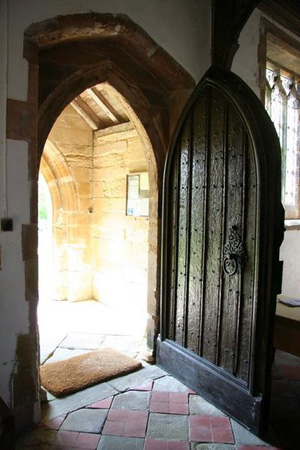 Whistle for your post owl, conjure your djinn, geas an itinerant minstrel or passer-by into delivering your parcel: genre publisher
Whistle for your post owl, conjure your djinn, geas an itinerant minstrel or passer-by into delivering your parcel: genre publisher  The Borribles
The Borribles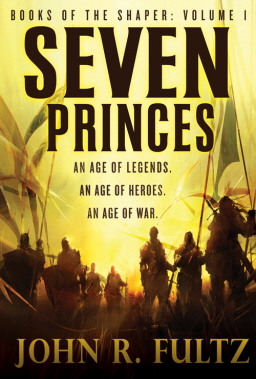 Nihilism got you down? Can’t stomach yet another scene of rape and torture? Need a break from learning your eleventeenth language and living abroad? If so,
Nihilism got you down? Can’t stomach yet another scene of rape and torture? Need a break from learning your eleventeenth language and living abroad? If so, 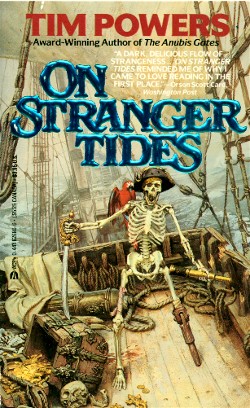 Extolling the virtues of Tim Powers to this audience is probably preaching to the choir, but if you haven’t yet read On Stranger Tides, get thee to
Extolling the virtues of Tim Powers to this audience is probably preaching to the choir, but if you haven’t yet read On Stranger Tides, get thee to 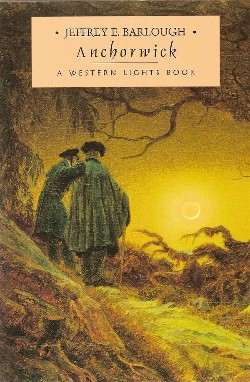 Anchorwick
Anchorwick